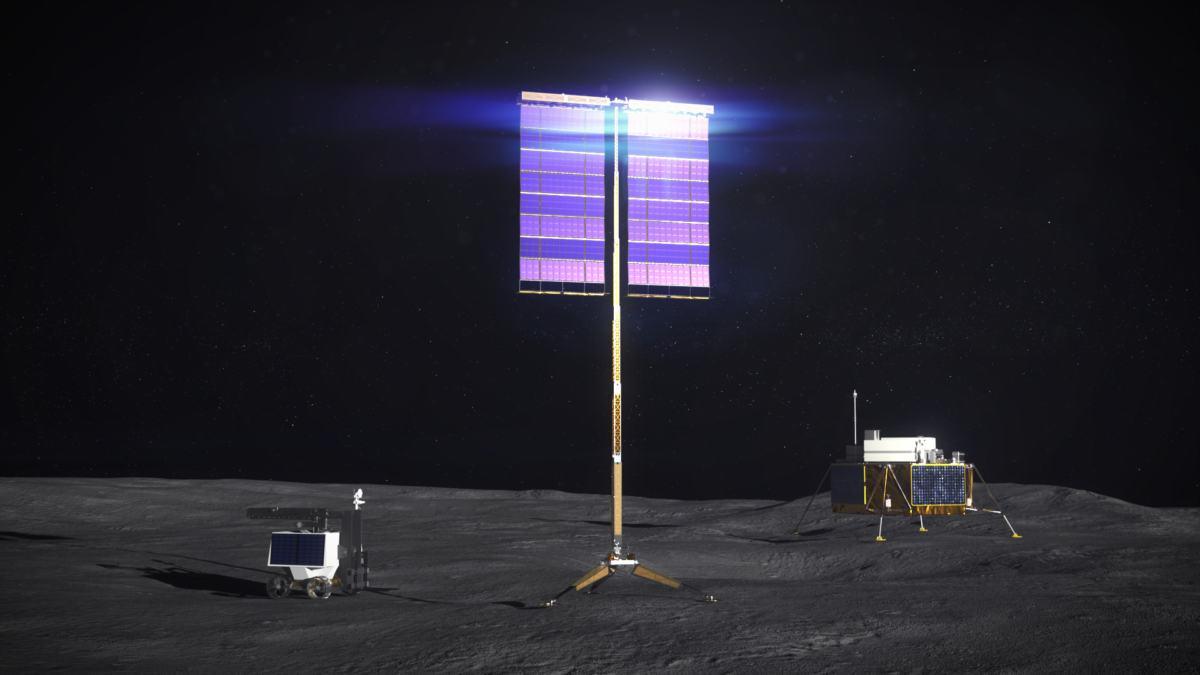A group of scientists at NASA‘s Langley Research Center Hampton is developing a 10 kW relocatable, free-standing solar array to be used in an upcoming mission to the lunar south pole, likely by the end of this decade.
NASA selected five companies to compete for the development of the device. Lockheed Martin, Pittsburgh-based Astrobotic Technology, California-based ATK Space Systems, New York-based Honeybee Robotics, and Palo Alto-based Space Systems Loral will all bid for the contract. NASA has already awarded initial $700,000 contracts to each of the competing companies. The two winning companies will then each receive an additional $7.5 million to build prototypes and run environmental tests.
NASA researchers have described the “Relocatable Solar Array” (RSA) as a pair of solar cell blankets freely hanging from a horizontal cross arm supported by a vertical telescoping mast on a deployable tripod base. The device must be retractable and movable, but must be as mechanically simple as possible. The mast supporting the 50-kg array should be 16 meters high and will be placed on a deployable tripod base.
“NASA is not looking at terrestrial applications of the vertical solar array,” Richard Pappa, a space structures engineer at the NASA Langley Research Center, told pv magazine.
NASA said in a statement in March that “existing space-rated solar array structures and deployment systems are designed for use in microgravity or horizontal surface deployment … The vertical position and height of these new designs will help prevent loss of power at the lunar poles where the sun does not rise very far above the horizon.”
Popular content
The scientists explained that the tall vertical structure increases the chances of receiving uninterrupted light. NASA said the force exerted by lunar gravity in the proposed design will be used to maintain the extension of the hanging array blankets.
“A second major factor in achieving the desired low mass and high volumetric efficiency is that the array operates in the vacuum, low-gravity, lunar environment with no deployed vibration frequency requirement,” the agency said. “Such a low-load environment enables use of extraordinarily slender and low mass structural members to support the hanging array blankets.”
The need for low mass and low package volumes creates design constraints, including the mast's thickness and diameter. It will also complicate the proper sizing for joints, latches, actuators, and slender structures, said NASA.
This content is protected by copyright and may not be reused. If you want to cooperate with us and would like to reuse some of our content, please contact: editors@pv-magazine.com.



Are manufacturers of venetian blinds welcome to apply?